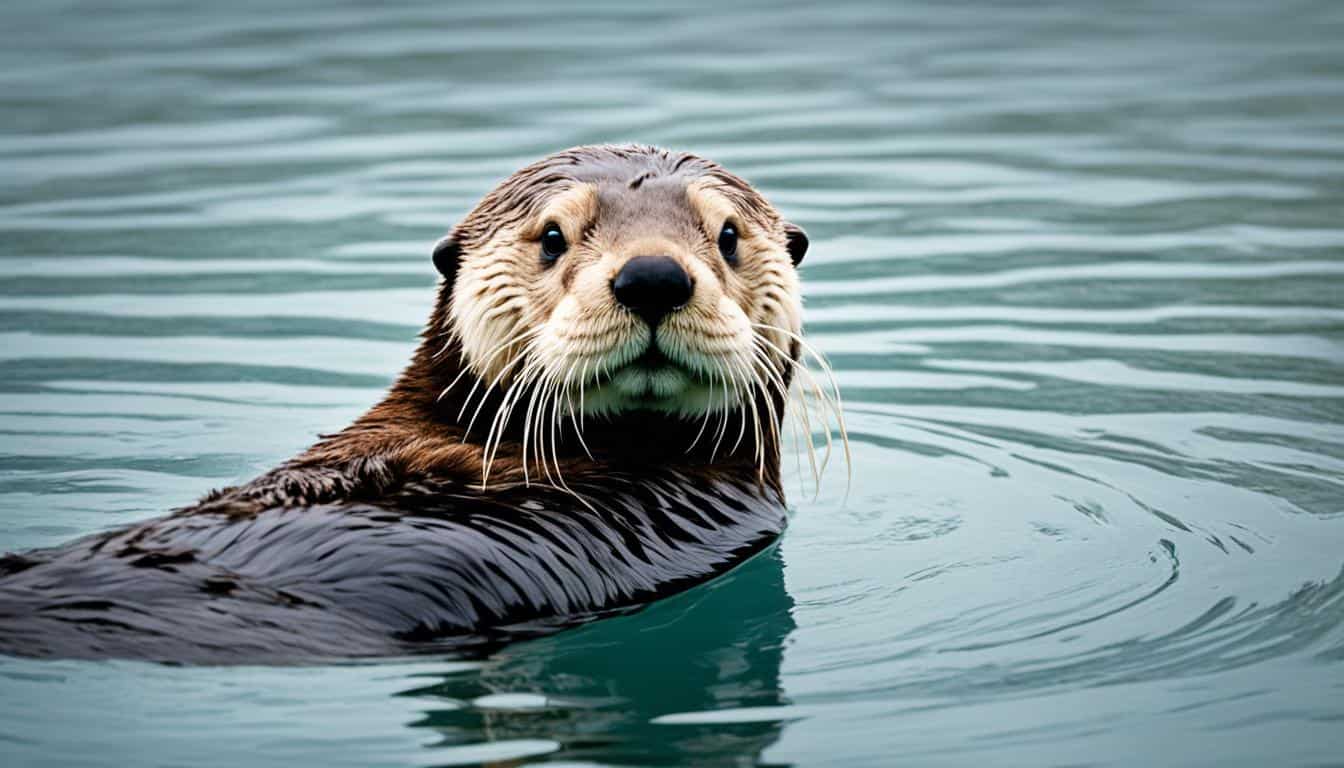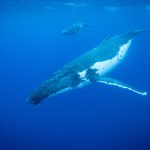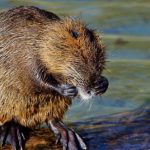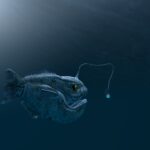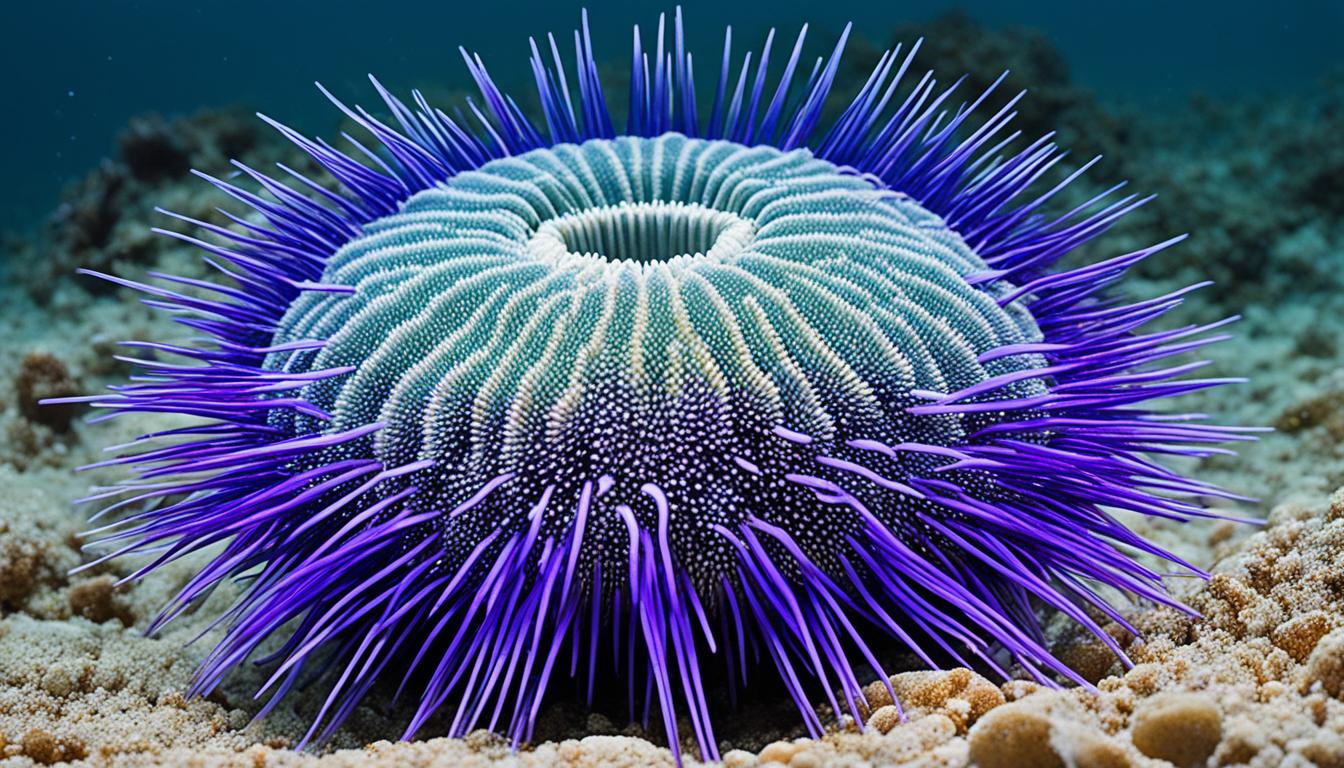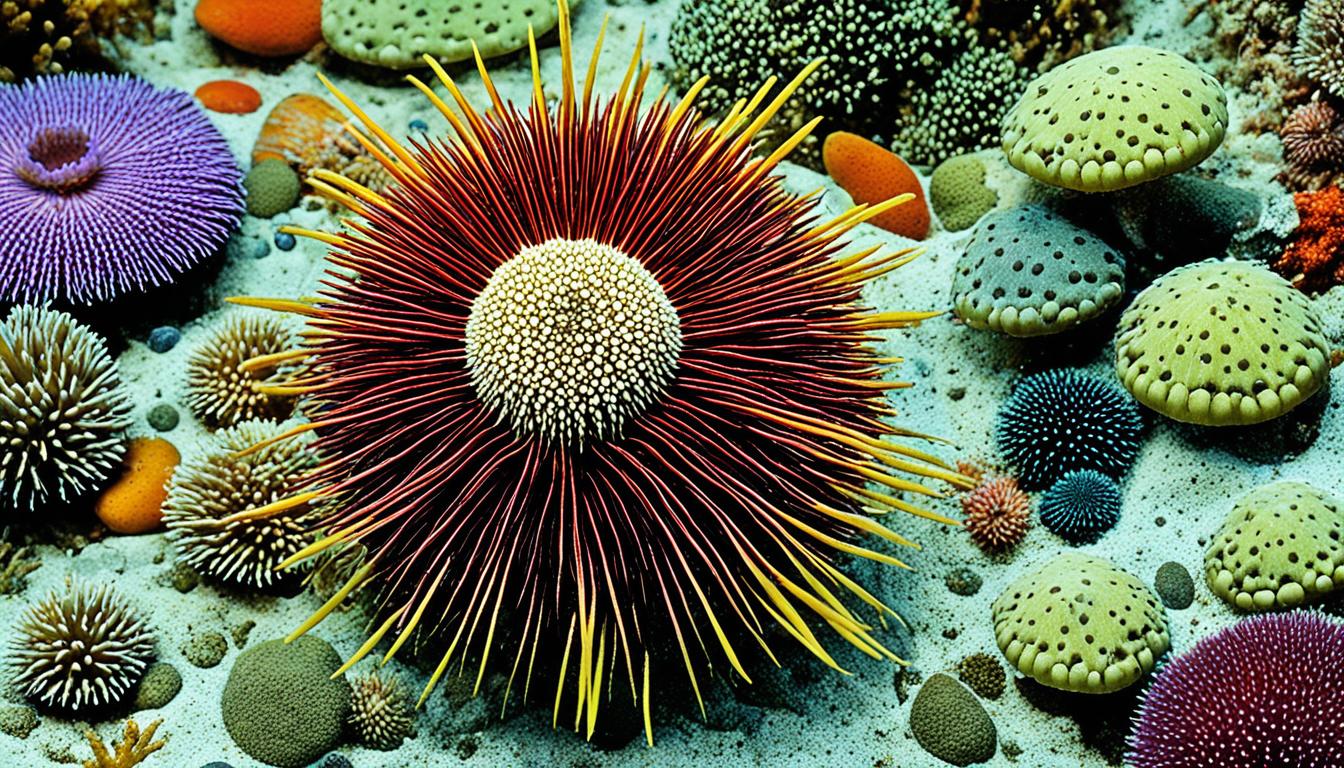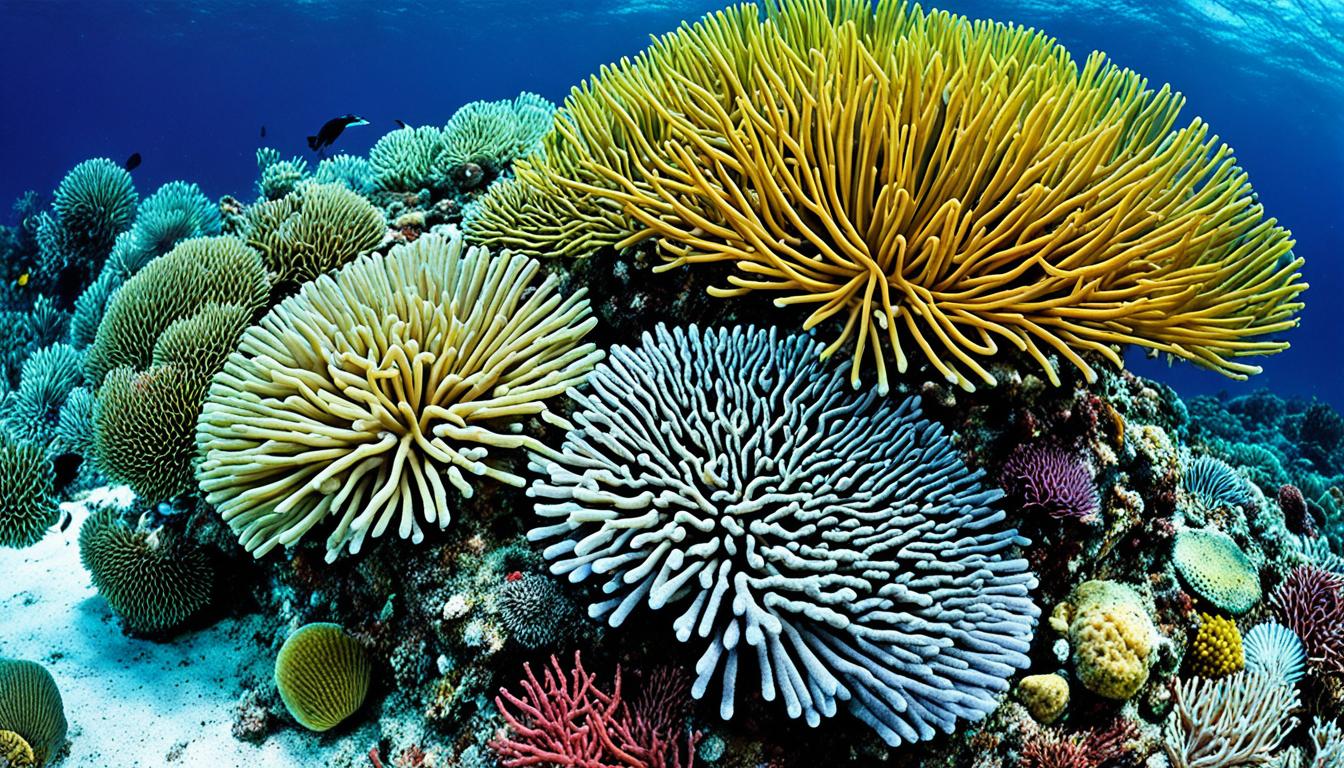Sea otters are very important to communities along the Pacific Coast. Indigenous Peoples have looked up to them for thousands of years. They mean more than just being part of nature; they show strength and care for the land.
These animals almost disappeared in the 19th century because of the fur trade. But their story is still alive today.
Exploring the culture of sea otters shows how these animals are deeply connected to people’s stories and traditions. They play a key role in keeping nature in balance. And their impact on culture is still felt today.
The Historical Symbolism of Sea Otters
Sea otters have been important in Indigenous cultures for thousands of years. They are more than just animals; they are key parts of the ecosystem. They also have deep cultural meaning for people living by the coast.
Learning about their historical symbolism shows how closely tied these marine mammals are to Indigenous communities.
Traditional Uses in Indigenous Cultures
In many Indigenous cultures, sea otters were used for more than food. They were used to make tools, clothes, and items for ceremonies. This shows how communities respected sea otters and hunted them in a way that kept their numbers healthy for the future.
The Impact of the Fur Trade
The fur trade had a big impact on sea otters. In the 18th and 19th centuries, people wanted more sea otter fur, leading to too much hunting. This caused the sea otter population to drop, which hurt the balance of coastal ecosystems.
This change also affected Indigenous peoples who relied on sea otters for their way of life and culture.
What is the cultural significance of sea otters?
Sea otters hold a special place in the culture of coastal Indigenous Peoples. They are more than just animals; they are vital to traditions and symbolize a deep connection to the ocean. This bond shapes the identity and practices of communities.
Cultural Reverence Among Coastal Indigenous Peoples
For many coastal communities, sea otters are seen as vital relatives. They are the embodiment of the ocean’s richness. These creatures inspire stories and art, showing their importance in Indigenous culture.
They symbolize resilience and resourcefulness. This highlights their crucial role in the lives of Indigenous Peoples. The respect for sea otters reflects a philosophy of living in harmony with nature.
Relating Sea Otters to Marine Ecosystems
Sea otters are key to marine ecosystems. They control sea urchin populations, which keeps kelp forests healthy. These forests are vital for many marine species.
The importance of sea otters goes beyond their role in nature. It shows the value of biodiversity in maintaining balanced ecosystems. This underlines the need for conservation efforts to protect marine life and cultures.
| Aspect | Description |
|---|---|
| Cultural Role | Symbols of respect and heritage for Indigenous communities |
| Ecological Importance | Keystone species that maintain balance in marine ecosystems |
| Conservation Efforts | Critical for protecting marine biodiversity and Indigenous traditions |
| Community Involvement | Local engagement in conservation initiatives enhances cultural ties |
Indigenous Perspectives on Sea Otters
Indigenous people have a deep connection with sea otters. They see these creatures as more than just animals; they are part of their culture. Sea otters symbolize joy, balance, and the beauty of life in coastal areas. This view adds a rich layer to their cultural importance.
The Role of Sea Otters in Tribal Traditions
Sea otters hold a special place in many tribal traditions. They are seen as playful and curious, showing us the beauty of nature. In stories, they are tricksters, teaching us to respect all living things. These tales help guide how communities live with the sea and its creatures.
Traditional Ecological Knowledge About Sea Otters
Indigenous people have a deep understanding of sea otters. This knowledge, passed down through generations, teaches sustainable ways to live with these animals. It includes how to hunt them and when, keeping the balance in nature.
Working together with groups like the Elakha Alliance, indigenous communities and scientists are sharing their knowledge. This mix of traditional and modern science helps protect sea otters and their homes.
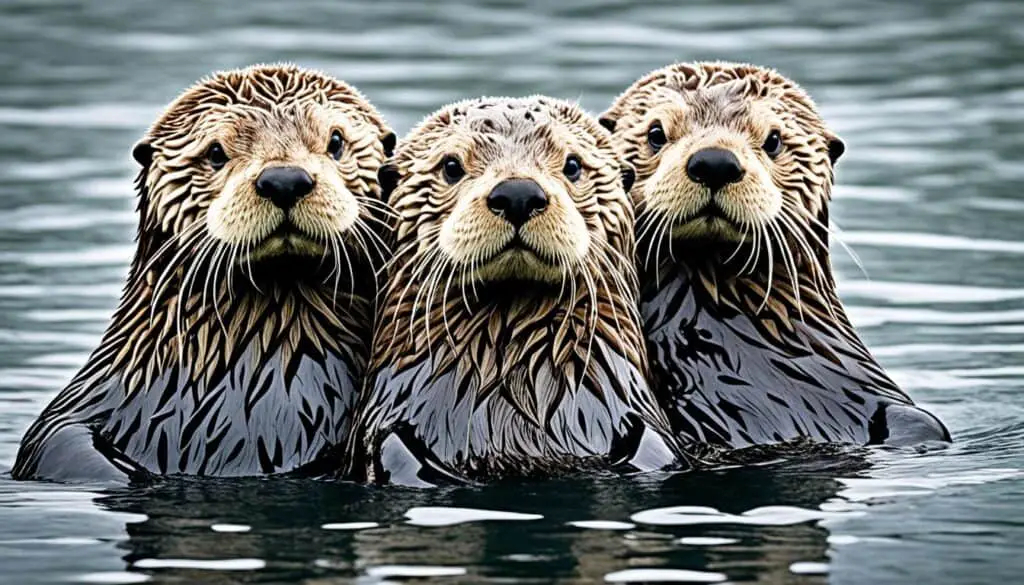
Sea Otters in Art and Folklore
Sea otters are special in both old stories and modern art. They show up in many cultures, showing their big role in caring for the environment and our cultural identity. Looking into sea otters in art and stories tells us a lot about how we see these sea mammals.
Representation of Sea Otters in Native American Stories
In Native American tales, sea otters are seen as gentle and fun. They are symbols of how everything in life is connected. These stories teach us to respect nature and take care of it:
- Strength in Community: Stories show sea otters working together, teaching us about teamwork.
- Harmony with Nature: Folklore talks about how sea otters live in balance with their world, showing their key role in nature.
- Cultural Heritage: These stories link past and present, helping us understand our bond with nature.
Symbolism of Sea Otters in Contemporary Art
Today’s artists look to sea otters for inspiration, showing their importance and cultural value in modern art. This art does many things:
- Environmental Advocacy: Artists use sea otters to highlight the need to protect the ocean and the effects of climate change.
- Exploration of Identity: Sea otter art often looks at heritage and how we connect with nature.
- Visual Aesthetics: Sea otters are fun to look at, making art about them creative and engaging.
Conservation Importance of Sea Otters
Sea otters are more than just cute creatures. They are key to keeping marine ecosystems healthy. By eating sea urchins and other plants, they stop these plants from eating too much kelp. This is vital for the health of coastal areas.
They help create a rich marine world where many species can live together. This shows how important it is for different animals to work together to survive.
Balance of Marine Ecosystems through Sea Otters
Without sea otters, marine life suffers. When their numbers go down, sea urchins eat too much kelp. This destroys homes for many sea creatures.
This shows how important it is to protect sea otters. They keep the ocean in balance. We need to work to save them for the good of the ocean.
Restoration Efforts and Community Involvement
Recently, there has been a big push to help sea otters. Groups like the Elakha Alliance work with local people to bring back sea otters to the Oregon coast. These efforts show how important it is to work together to protect nature.
Supporting policies that respect Indigenous rights helps too. This way, we can help sea otters and the ocean at the same time.
FAQ
What is the cultural significance of sea otters?
Sea otters are very important to many communities along the Pacific Coast. Indigenous Peoples have valued them for over 10,000 years. They stand for resilience, taking care of the land, and being connected to the ocean. They show the balance of nature and our cultural roots.
How have sea otters been traditionally used in Indigenous cultures?
Sea otters were used for food and to make tools, clothes, and items for ceremonies. Indigenous people have always respected these animals. They managed them in a way that showed great respect.
What was the impact of the fur trade on sea otter populations?
The fur trade in the 18th and 19th centuries greatly reduced sea otter numbers. They were hunted for their fur, which was very valuable. This hurt the coastal ecosystems and how Indigenous people lived.
How do coastal Indigenous Peoples view sea otters?
Coastal Indigenous Peoples see sea otters as key to their culture and history. They consider them as family and a big part of their world. They show a deep bond with the ocean.
What role do sea otters play in marine ecosystems?
Sea otters are key to keeping marine ecosystems in balance. They help control sea urchin numbers. If sea urchins got out of control, they could destroy kelp forests, which are vital for many species.
What is traditional ecological knowledge related to sea otters?
Traditional ecological knowledge is the wisdom and practices passed down by Indigenous Peoples about living with sea otters and their homes. This knowledge helps us today in saving these animals and their homes.
How are sea otters represented in Native American stories?
In Native American stories, sea otters are seen as fun-loving tricksters and symbols of happiness and balance. They show the strong bond between humans and these animals. They teach us to respect nature.
What is the significance of sea otters in contemporary art?
Sea otters inspire many artists today. They are often shown in art as symbols of strength. This art reflects our efforts to save them and their importance in our culture.
What conservation efforts are in place for sea otters?
There are new efforts to help sea otters and the ocean they live in. These include working with groups like the Elakha Alliance. They combine science and Indigenous views to protect these animals.
Why are community-based restoration efforts important for sea otters?
Community efforts are key because they involve local people and respect Indigenous rights. They teach the value of taking care of the ocean and its creatures. This helps keep the marine world healthy.

